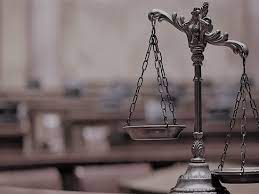What is a pre-constituted test? At what moment does it occur? What is the difference with an early test? It is essential when preparing a criminal process to know well the tools that lawyers have at our disposal.
The main tool is to know our criminal procedural law well, always have a Criminal Procedure Law at hand and be very clear about the different phases of a criminal process. For this, I leave you here the Phases of the Criminal Process (Explained with Examples).
Within all this there are essential elements that will mark the future of a trial and they are the evidence. Within them we can differentiate several types such as documentary, computer, audiovisual, ocular evidence, etc. And within the classification of these tests we have the pre-constituted test drawer.
It is important to know this concept since pre-constituted evidence, as we will see later, can condition an entire criminal process.
What is a pre-constituted test?
Preconstituted evidence is evidence that already exists before a trial begins. That is, within the criminal process established by the LECrim, they are those that are available before the opening of the trial begins.
This evidence is available to the parties much earlier than the start of the trial and may or may not be used by the parties.
We are talking, for example, in the case of an arrest for a crime in flagrante, the identification of the detainee. It is proof to know which person is the author of the alleged crime. This is known in advance through police identification.
Practical examples
The first example of preconstituted evidence would be the ocular recognition of a crime scene by security forces and bodies. The photographic report carried out by the police is pre-constituted evidence since it exists prior to the trial and can be used in it.
Another practical example of pre-constituted evidence is the entry and search of a home. In it, a record of everything found in a home and custody of material evidence is carried out. It is practiced before the oral phase and is available for it.
A telephone intervention is also an example of pre-constituted evidence. The judge authorizes the security forces and bodies, after a series of indications, to wiretap an alleged criminal. In the event that evidence of a crime is observed through it, they will be collected for presentation in the oral phase.
The pre-constituted evidence aims to demonstrate the facts that are alleged in the trial. Demonstrate that a fact is valid and has occurred in reality. Furthermore, such evidence is recognized as valid in court in the jurisprudence of the Constitutional Court and Supreme Court.
Time to practice the pre-constituted test
Preconstituted evidence is practiced in the investigation phase, without any delay since it can disappear or be destroyed at the time of the oral trial where it is generally practiced.
Each and every one of them must be practiced in advance of the oral trial. The reason for this is that such aspects or evidence may disappear or not be present at the time of the oral trial.
That is why they are saved, collected and filed so that they can be used and used by the parties at the time of the oral trial. Depending on the type of preconstituted test, it will be saved in one way or another. For example, if it is a document it will be archived for later presentation.
If it is audio, it will be saved on computer support for later playback. If it is a statement, it will be filed for later presentation in oral proceedings.
An example that illustrates this very well is the autopsy. An autopsy of a corpse is a pre-constituted test since it must be carried out at the time of death and prior to the criminal trial. Otherwise, the body could be decomposed and, furthermore, the autopsy could not be performed in the courtroom at the time of the oral trial.
This example is the most clarifying to understand what pre-constituted evidence is.
Difference between pre-constituted test and advance test
The pre-test and the advance test can be very similar. In fact, both must be practiced at a time prior to the oral trial.
The advance test is one that, although it can be carried out in the oral phase, must be carried out at an earlier time due to some circumstance unrelated and exceptional to the process.
It occurs, for example, in cases in which the victim is from a foreign country and cannot come to Spain at the time of the oral trial. The victim is an Australian who was robbed on the subway. His residence is in Australia and therefore he cannot come in person months later to the oral phase.
The judge appreciates this exceptionality and orders the statement to be made at a time prior to the oral phase. This constitutes an advance test.
The difference, therefore, is that in pre-constituted evidence this exceptionality does not occur, but is practiced at the moment because it is impossible to do so in the oral trial.
In advance evidence there is a special circumstance that without it could be practiced in the oral trial.
For example, a pre-constituted test widely used and recognized as such in the LECrim, would be the witness statement of a minor under 14 years of age for certain crimes such as homicide, injuries, moral integrity, etc.
This declaration must be made in a period prior to the oral trial phase. The reason for this is not to undermine the minor by his presence before a full audience.
This fact is also included in article 449 ter of the LECrim, which states:
“When a person under fourteen years of age or a person with a disability in need of special protection must intervene as a witness in a judicial procedure whose purpose is the investigation of a crime of homicide, injuries, against liberty, against moral integrity, trafficking in human beings, against sexual freedom and indemnity, against privacy, against family relationships, related to the exercise of fundamental rights and public freedoms, of criminal and terrorist organizations and groups and of terrorism, the judicial authority will agree, in any case , practice the hearing of the minor as pre-constituted evidence, with all the guarantees of the practice of evidence in the oral trial and in accordance with the provisions of the previous article.
This process will be carried out with all the guarantees of accessibility and necessary support. “
Practical example
An example would be the case in which Francisco, a 13-year-old minor, witnesses the murder of a person as a witness. In order not to cause a disadvantage or trauma, his statement will constitute pre-constituted evidence through the statement prior to the oral phase.
For these issues we must keep in mind the communications practiced by judges and courts. Therefore, I leave here The Acts of Communication in Procedural Law: Types and Practical Examples.
This will help us elucidate the different types of acts and be attentive to them for all these types of issues.
Conclusion
As we have seen, pre-constituted evidence is very numerous in legal practice. They are much more present than one might think. The fact that they have been practiced previously does not mean that they lack legal validity.
As we have pointed out before, jurisprudence supports this way of obtaining and demonstrating the facts that can be crucial to tipping the balance of a trial to one side or the other.
As good lawyers, we must have a very active part in controlling the evidence pre-constituted in the process since these will define the strategy to follow in the subsequent oral hearing.
Knowing how to recognize them, obtain them and be able to object that they are obtained with all legal guarantees or without them, can make us start at a point of advantage over the other part of the process. Hence the importance and interest in the writing and information of this article to have a more complete and faster knowledge of the subject.


